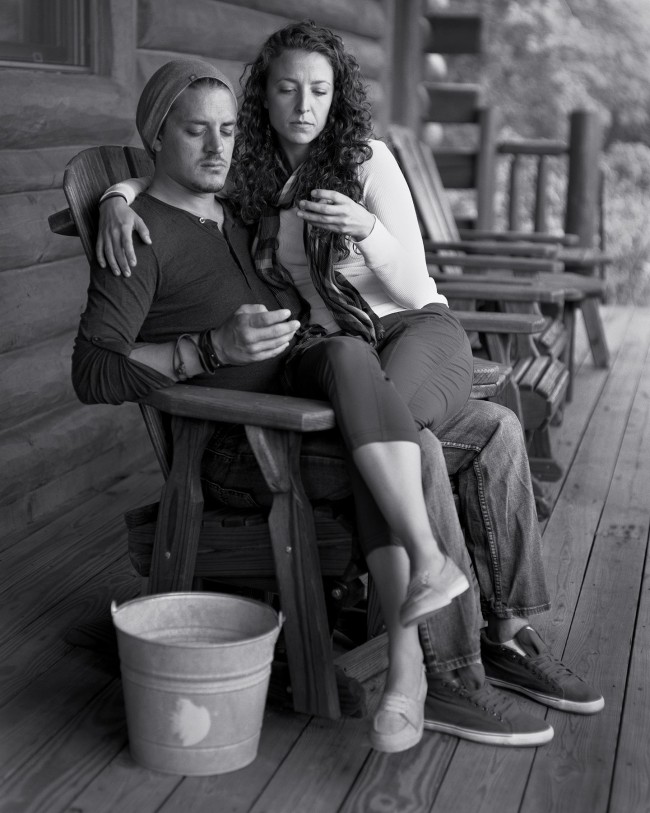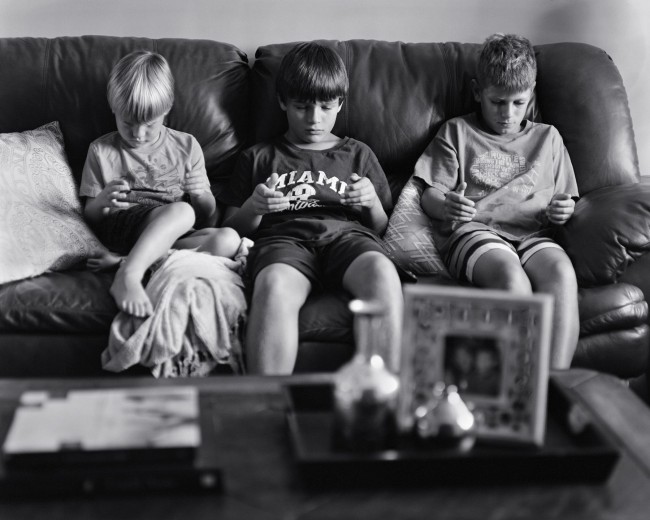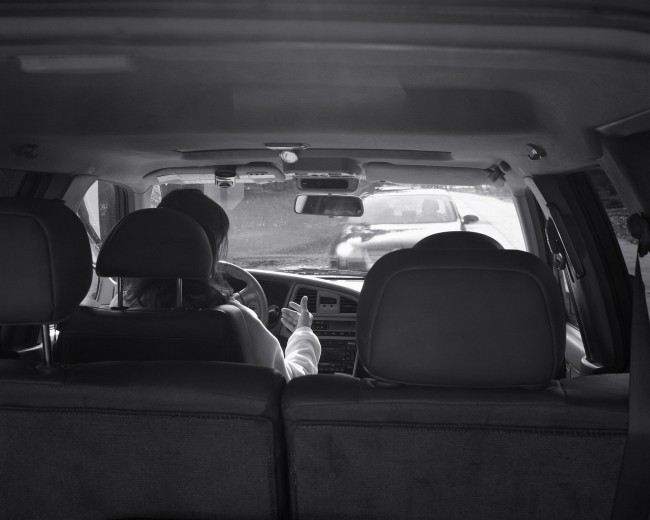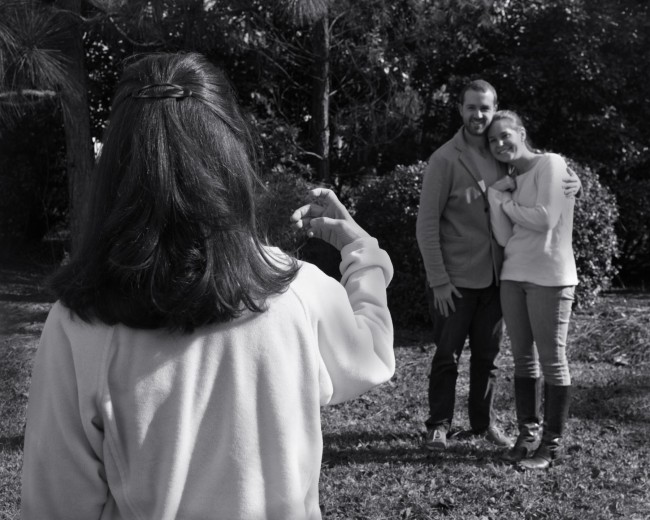by Efrem Zelony-Mindell, aCurator
You’ve probably seen and possibly heard the story of Eric Pickersgill’s body of work: REMOVED. How Eric noticed a family in a coffee shop all staring at their personal devices and simultaneously feeling disgusted dejected and realizing that he was that same family. So he created a series of images with the phones removed, “to show just how weird that can be”.
What you probably haven’t heard is what happens to a photographer when a series of images goes viral. And what can be done to harness some of that viral-ity to money and attention to the photographer whose images have been co-opted by the internet.
“It happened so fast. It still seems a little unreal,” Pickersgill chuckles. 2015 was already shaping up to be a great year for him as an emerging photographer, even before a friend at Business Insider asked to feature his work. Business Insider was the start. Views of Pickersgill’s feature quickly went from a few hundred to tens of thousands. A day later the work started popping up on other blog’s and online publications. How is a little hazy, as some of these early posts were used without an e-mail to him. This additional coverage helped push the work further; this is when sensible inquiries started. USE USE USE, WANT WANT WANT, e-mail after e-mail requesting images for publications we view every day.
The emails quickly ramped up to over 300 a day and Eric says, “money floated into my mind as an afterthought, but I soon realized I was going to need some help.” Almost without exception, the expectation was that images would be given for publication for free. He did not get too many “it will be great exposure for you” insults, but the sense was he would be eager to be published. And Eric was very eager to be published and a number of websites and blogs benefitted.
On the third day of this Eric called photo professional Julie Grahame, who he was introduced to by a mutual business friend. “I wasn’t sure the first time we spoke. I thought the work might just fizzle,” Grahame said. It’s funny to note that both Pickersgill and Grahame shared this thought upon first interactions before they agreed on working together. Pickersgill quickly came back around to Grahame after a day or so attempting the Internet solo. “Other countries started calling for the work. The Netherlands, South Africa, on and on.”
With so many inquiries on the table, Julie set out with Eric to prioritize those likely to have a budget. They agreed to just not get back to a bunch of people until they had managed the more practical clients. That was hard for Eric, he had to understand he wasn’t being rude, he was just staying sane. A couple of things likely slipped through the cracks, because it was so overwhelming, but they soon had several invoices out to various countries, and as each publication came out, they perpetuated the interest.
“Some clients I expected to have a budget said no, and when we refused to play, managed to find a little bit of cash”, says Julie of their interactions with clients. One German journalist said “I’m sure they do have a budget, I’ve just never seen it used” and then found them $200. They had to be creative and flexible – one client who Eric did an interview with had to process the fee as an equipment expense. With all the best intentions and efforts it is difficult to get a publisher to pay up-front but they did manage it on a few occasions.
Lots of people wanted interviews as well, but they still insisted on license fees for the majority of them. They also let go a bunch of websites who used images without permission that they felt it would be impractical to pursue.
“Collecting the money is the usual ongoing effort but we’ve done really well!”, says Julie, “I would like to add we have negotiated licenses that include an ad campaign, and a music video.” (As an aside, managing tax issues and incoming wire transfers from all over the world is a bit of a pain.)
There were also several requests for prints but Eric decided that “instead of jumping to make quick sales, he waited until he found a gallery who was interested in the work and who would then fulfill the print requests for him.” This manifested in an enthusiastic agreement with Rick Wester Fine Art, in New York within a month of going viral.
Family sitting next to me at Illium café in Troy, NY is so disconnected from one another. Not much talking. Father and two daughters have their own phones out. Mom doesn’t have one or chooses to leave it put away. She stares out the window, sad and alone in the company of her closest family. Dad looks up every so often to announce some obscure piece of info he found online. Twice he goes on about a large fish that was caught. No one replies. Eric is saddened by the use of technology for interaction in exchange for not interacting. This has never happened before and he doubts we have scratched the surface of the social impact of this new experience. Mom has her phone out now. This is Pickersgill’s story, this is how it all began.
The photos are deeper, they delve into a history of portraiture, and they are as sculptural as they are narrative. Pickersgill’s images bridge a gap between fine art and editorial. They are full of repose and gesture and curiously, the hands of the subjects with their devices removed, create a nebulous sense of vacuum. Composition informs the subject’s relation; tonality and print quality capture awkward moments of estranged intimacy. In Pickersgill’s own words, “I have a strong connection to the body and photographing people.”
REMOVED incites a certain sense of joy hidden in the images’ absurdity. That’s not to say they’re a joke, laughter ensues because the photos allow a viewer to realize just how complicated they’ve made themselves. There’s a freedom in that.
Eric’s future isn’t clear, but there’s a whole lot of potential. The work will continue, and so too will the obsession with REMOVED. As long as people need reminding it seems pretty clear Pickersgill will have subjects to photograph. The body goes on adapting and relying, submitting itself. And maybe that’s the ultimate realization the work can impart. I don’t get the feeling that his photos are trying to say put down the technology, but to grow with each other and to raise the platform. The blinking lights and fun little gadgets will catch up.








